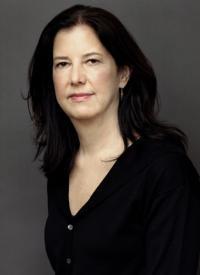I discovered the idea for 31 Bond Street one Saturday afternoon, years ago, while idly flipping through the bins in a print shop. I found a yellowed newspaper page with an etching of townhouses on a tree-lined street in New York City. At closer look, a crowd was assembled on the cobblestones before one of the homes. The caption said the address was 31 Bond Street and the date was 1857.
The print shop was on Houston Street, just blocks away from Bond Street, which is a short street nestled between Soho and the Bowery. It was puzzling, because I knew of no townhouses on that single block. Not yet trendy or gentrified, there were only warehouses, car parks and the type of business that sells rusting scrap metal. Examining the page further, the story mentioned a crime at 31 Bond Street—a wealthy dentist had been brutally murdered inside his home.

I bought the print for $8 and followed the trail of that one page to the New York Public Library. At that time, the library still had newspapers on microfilm. Thinking I would have to dig for clues to this lost story, I pulled out The New York Post, The New York Daily News, The New York Daily Times, The New York Herald and The New York Tribune. Immediately, unspooling across every city paper, was coverage of the murder of Dr. Harvey Burdell. In the first half of 1857, his murder created a sensation that covered all 13 New York newspapers and spread to those of Philadelphia, Boston, Chicago, then London, Paris and beyond. It remained in the headlines for months, as the newspapers competed to cover the investigation and the murder trial.
“Unspooling across every city paper was coverage of the murder of Dr. Harvey Burdell.”
I became fascinated reading about the case firsthand. By sifting through the newspapers day by day, I learned the outcome as a 19th-century reader might, discovering the story through their morning paper at breakfast. I also learned about the era through the advertisements and news of the day. In 1857, New York was a vibrant and chaotic place, and urban life was marching forward at an accelerating pace. One hundred steamers left the ports every day and immigrants still disembarked from sailing vessels at the foot of the Battery. Women wore steel spring hoop skirts with adjustable bustles and paraded their fashions to the theatres and entertainments along Broadway. Rents had gone up and the Union ferry raised its rate to two cents. Canal Street was widened and a lunch of oysters and ice cream could be had on Houston Street.
There was no electricity or transatlantic cable and news took six weeks to cross the Atlantic. The country was debating the extension of slavery into the western territories. It was apparent, from reading the newspapers, that New York City was in the midst of an economic and cultural boom, and few, if anyone, imagined that just three years hence, the country would be plunged into crisis and civil war.

Thus the book was born. The process of writing unraveled slowly, much like an archeological dig. There were several mysteries that gripped me as I moved forward. There was an unsolved murder. There was domestic life on Bond Street, an actual street where ghostlike traces of the fine homes are still evident on the walls of the taller buildings today. There was a secret romantic entanglement between the murdered man and the suspect, and there were political and legal rivalries at the heart of the case. Real characters and dialogue from trial transcripts merged with fictional characters as the narrative evolved.
And the city of New York retained a central and fascinating pull, as the setting of its own vanished past.






